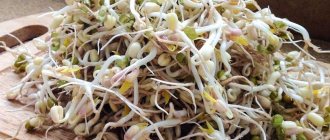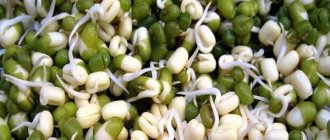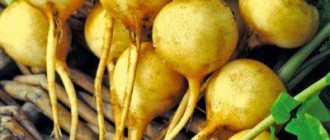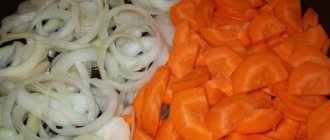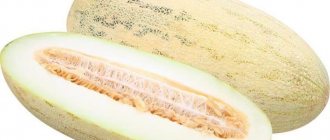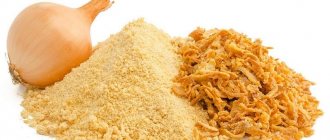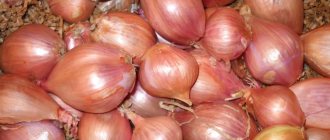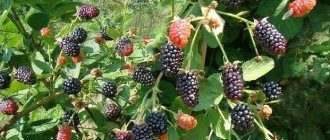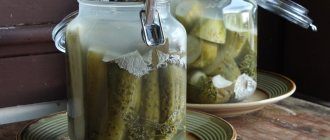Tamarillo is a fruit that is very similar to a tomato. Therefore, a plant that bears fruit with exotic wonders is called a tomato tree. The taste of this fruit is not familiar to every person, but it is universal in its characteristics and surprisingly healthy for everyone.
Tamarillo is a fruit, but looks similar to the common tomato, eggplant or pepper.
Tamarillo: description (botanical)
The plant belongs to the nightshade family. Cyphomandra beetroot is another name for this original representative of the plant world. It is an evergreen tree, reaching 2-3 meters in height. But it cannot be called a full-fledged tree; it looks more like a shrub. It has shiny foliage. It has small white-pink inflorescences that emit a pleasant aroma.
The plant prefers subtropical climates and pleasant warm weather. Argentina and Brazil are the most favorable areas for successful cultivation. The lifespan of the plant is approximately 15 years. It begins to bear fruit after the first year of life. Tamarillo is a fruit that will not withstand even the lightest frost.
Rules of care
To get tasty, fleshy fruits and a healthy plant, you need to properly care for it. This applies to fertilizing, irrigating the soil, and pruning crops.
See also
Review of the best tomato varieties for the Volgograd region
Read
Watering
The tomato tree needs regular watering. If weather conditions are cool, the tree needs to be irrigated once a week. During hot periods, the number of waterings should be increased to 2-3 per week.
Top dressing
Fertilizers need to be added to the soil regularly. It is best to use liquid fertilizer for tomatoes. If necessary, its effect can be enhanced with the help of prolonged effect agents.
Trimming
The tomato tree needs regular pruning. A year after the first harvest, the tree is pruned so that its height is at the level of a meter. This procedure will allow the branches to develop more actively. To form fresh shoots, it is recommended to cut off branches that have already produced a harvest.
Pruning can be done in spring or autumn. To obtain an early harvest, it is recommended to prune the branches in early spring.
Shape and color of ripe fruit
The fruit of the tomato tree is ovoid in shape and reaches a length of 10 cm. The berries grow in large clusters. Their number in one bundle can reach 12 pieces. The peel has a variety of colors: it can be orange, red, yellow and muted purple. Under the thin skin hides tender flesh that has a golden hue. When you cut the fruit inside, you will find many black seeds neatly arranged along the core.
What is a fruit
The tomato tree resembles a tomato bush in structure and appearance. Reaches a height of 3 – 4 meters. The fruits resemble an elongated oval. The edible tamarillo fruit is slightly larger than a chicken egg. They resemble tomatoes in shape and appearance. They are small in size, slightly pointed at the bottom and covered with thin skin.
On the tree they are collected in clusters of 3 to 15 pieces. One fruit of the tomato tree can reach a maximum weight of up to 300 g. Inside the fruit there are several chambers of orange pulp with small seeds.
The pulp has a pleasant and varied taste. It can have both sweet and spicy flavors. Reminds me of a mixture of guava with kiwi and tomato.
There are seeds inside the fruit, but they are not felt when eaten.
Attention. When unripe, the fruits contain solanine, which is a weak poison. Therefore, you should always eat only ripe fruit.
Tamarillo should be collected in time, before insects take their fancy.
Types of tamarillo
Today, science knows about the existence of three main types of tamarillo fruit:
- Red. This option is beautiful in its original form. It has a harmonious taste, which is revealed to its maximum if eaten raw. This type is the most popular. It has a bright red skin and orange flesh. The seeds have a reddish tint. Due to the correct and beautiful arrangement of the seeds, it is often used to decorate various culinary masterpieces. It can decorate even the most inconspicuous-looking dish with its rich color and pleasant aroma. For the first acquaintance with the fruits of an exotic plant, it is recommended to try red tamarillo. The fruit of this variety is considered classic and the most correct.
- Yellow. Would it be unusual to taste a very sweet tomato? The fruits of the yellow tomato tree provide an opportunity to enjoy the mild taste and sweetness of the pulp. This tamarillo is smaller in size than the red one. In appearance and cut it is no different from an ordinary tomato.
- Orange (golden). The fruits of the orange tamarillo in their sweetness represent a middle option between red and yellow. The advantage over other species is the size of the fruit. Fleshy and juicy, golden-hued tamarillo is much larger than other species.
Tamarillo tomato tree, how to eat and grow it
A few years ago, many people had never even heard of tamarillo. However, today this fruit is quite popular among gardeners. It can be grown in a greenhouse or in open ground. From one tomato tree you can harvest 10-15 kg of harvest. Before planting this plant, you need to familiarize yourself with how tamarillo is grown and eaten.
Description
The fruit is native to South and Central America, but currently its largest producer is New Zealand. It is from there that a large number of tomato fruits are exported.
The plant is quite tall and can grow up to 3-4 meters. Its fruits look like ordinary tomatoes. They have a smooth surface with an oval shape, like a chicken egg, and a sweetish taste. The width of the fruit is about 5 cm, and the length is 10-15 cm.
There are several main varieties of tamarillas:
- Red. This variety is one of the most popular. The fruits of the plant have reddish seeds, orange flesh and dark red skin. The fruit can be used not only for preparing various dishes, but also for decoration.
- Golden. The fruits are quite juicy and fleshy. They are much larger than the fruits of other varieties.
- Yellow. The fruit size of yellow tamarillos is not very large. Their main advantage is the taste, since these fruits are much sweeter than the red and golden varieties.
All varieties of this plant are not afraid of insects and are resistant to many diseases.
Beneficial features
The fruit contains a large number of useful elements, microelements and vitamins. You can use tamarillo to replace many other fruits. The fruits of the plant contain a lot of iron, magnesium, calcium, potassium, phosphorus, vitamins A and C. They also lack sodium and cholesterol.
Tamarillo is often used to reduce dizziness and headaches during neurological origin.
Features of cultivation
To understand how to plant a tomato tree correctly, you need to familiarize yourself with the features of this process.
Planting seedlings
Before planting, you need to get seeds. Tamarillo is a hybrid and it is impossible to grow seeds yourself, so you have to buy them. It is recommended to plant them as seedlings in mid-February.
First, the planting material is treated with a 1% solution of potassium permanganate. To do this, it is placed in liquid for several hours, after which you can begin planting. The seeds should be placed in the pot at a distance of 2-4 cm from each other. Then they are covered with plastic film. Growing seedlings should be carried out in a warm room with a temperature of at least 25-30 degrees. The first leaves on the seedlings will appear within a few weeks.
Planting in open ground
Planting seedlings should only be done when their height is more than one meter. Most often, seedlings grow to this size by the beginning of July or the end of May. The area for the tomato tree should be well lit and protected from strong drafts.
Before planting seedlings, it is necessary to fertilize the soil. You should add some mineral fertilizers and humus to it. Also, near future holes you need to install special pegs for gartering bushes. If several tomato trees are planted, the distance between them should be about 80-90 cm.
Beneficial features
Beetroot cyphomandra has an extremely rich vitamin and mineral composition. It contains a huge amount of substances that are necessary for the full functioning of the human body. Useful properties of the fruit:
- Can be used as a component of dietary nutrition due to its low calorie content. The use of tamarillo is encouraged in the process of losing weight, as well as for diseases of the gastrointestinal tract and diabetes.
- Contains a small amount of carbohydrates, rich in dietary fiber.
- Potassium and sodium are important elements to ensure a balanced diet. Tamarillo fruits are able to support the body with these substances.
- Contains vitamins: A, C, B6, thiamine, riboflavin.
- Golden and orange fruits are richer in vitamin A than red fruits.
Calorie content and product composition
Tamarillo fruit is considered one of the most nutritious. But those who are used to counting calories should not be afraid of it, because per 100 g of pulp there are only 30 kcal.
This amazing fruit is rightfully considered a treasure trove of vitamins and other beneficial substances. It contains vitamins of groups A, B, C, E and PP, as well as minerals and trace elements such as magnesium, potassium, calcium, phosphorus, iron. The dry matter content in beetroot juice reaches 15%, and free citric acid is 1.4-1.8%, which makes it many times more nutritious and healthier than tomato.
Also read on our website: Composition of orange, calorie content, beneficial properties
How to eat tamarillo correctly?
Many people are interested in: how do they eat tamarillo? This is a very important point, since the process involves several interesting nuances. First, the fruit has an inedible peel, so it must be removed before eating the fruit. The catch is that ripe tamarillo cannot be peeled with a knife, because it has a very soft structure.
We are ready to tell you how to eat tamarillo:
- Option 1. Dip the fruit in boiling water for half a minute and carefully remove the skin with your hands, as you do when you need to peel regular tomatoes.
- Option 2. You can simply cut the fruit into two parts and eat the pulp with a dessert spoon, as you do with a ripe avocado.
How to eat tamarillo
Of course, like any other fruit, it is eaten raw. But gourmets recommend not to miss the opportunity to enjoy the piquant taste in ready-made dishes. A representative of the tomato tree is akin to a vegetable and has a pronounced sweet and sour taste, which makes it very versatile in cooking. He's like a tomato and passion fruit rolled into one.
Before eating tamarillo, peel the fruit, which tastes bitter. There are two ways to extract the pulp:
- First, pour boiling water over the fruit, after which you can easily remove the soft skin.
- You can simply cut the fruit in half and eat it like passion fruit with a dessert spoon.
After removing the peel, the pulp can be cut into slices or chopped into a salad. But you shouldn’t refuse the opportunity to try a hot dish with this exotic “tomato”. There are a huge number of delicious recipes on how to cook tamarillo fruit and eat it with meat, in sandwiches, lasagna. The fruit has proven itself well in sauces, marinades, baked goods, ice cream bases, and jelly. It’s worth trying it in your favorite freshly squeezed juices and salads to easily be convinced of its ability to make familiar things new and unique in taste.
Red tamarillo varieties are more often used in vegetable and meat dishes. Yellow, due to their sweeter taste, is used in baked goods, desserts, fruit mousses and jams.
How is tomarillo eaten in the countries where it grows? Local children often simply pick the fruit, bite off the attachment point to the stem, and squeeze the pulp directly into their mouths. But if you find yourself in one of these places, be sure to try the local cuisine, the dishes of which often include this “secret” ingredient.
How to choose tamarillo
In order not to be disappointed in a great product, you need to choose it correctly. An ideal tamarillo has a shiny skin, no defective formations or dents, and the stalk is present and adjacent to the fruit. It is necessary to evaluate the product by touch. It should be soft, but elastic enough. If you press the surface of the fruit with your finger and release it sharply, it should return to its original shape. You should also pay attention to the color. It should be pleasant and uniform.
Rules for harvesting and storing crops
Remove ripe fruits carefully with your hands and in dry weather. The stalk must be left on the fruit; there should be no damage to the skin. Tamarillo is a perishable product; when fresh, its shelf life is 2 weeks when placed in the refrigerator. Fruits do not tolerate transportation well.
You can store it frozen, which requires peeling the pulp and placing it in the freezer. Or preserve it, which will make transportation easier. The beneficial properties of tamarillo are preserved.
Recipes
Its taste is reminiscent of passion fruit, and its beautiful shape is aesthetically pleasing. Fruit can become an exotic highlight of cooking:
- Tamarillo fruit puree makes an excellent marinade for meat products.
- A fruit salad combined with regular tomatoes can surprise guests.
- Interesting fact: the fruit of the tomato tree is equally wonderful in both savory and sweet dishes. For this reason, it can be a main ingredient in dessert menus.
- The product can be a component of a smoothie for a healthy diet and weight loss.
- Decoration from tamarillo fruits is an excellent option for the “finishing touch” in preparing a dish.
- The fruits of the tomato tree make healthy and low-calorie jam.
Now you know what tamarillo is and how to use it correctly.
Areas of use
The value of the product lies in its edibility, saturation with vitamins and microelements. Tamarillo fruits are used for preventive, medicinal and culinary purposes. The attractive appearance of the exotic tree makes it possible to use it in ornamental gardening.
Medicine
Vitamin E contained in digitalis inhibits the oxidation of intracellular fats. The consumption of fruits is recommended for rehabilitation after illness. Fans of the exotic fruit claim healing properties for the following ailments:
- Headache. Beneficial enzymes present in the pulp have a calming effect on the body and cause a hypnotic effect.
- Brittle hair and nails. These symptoms disappear and skin condition improves with regular consumption of the fruit. The lack of iron is compensated - the cause of anemia due to a decrease in hemoglobin in the blood is eliminated.
- The immune system. Including tamarillo in the menu every day increases the immune system's defenses.
- Visual acuity. Beta-carotene and folic acid contained in the pulp are useful for the prevention of eye diseases.
- Heart disease, colds. Ascorbic acid (vitamin C), magnesium, and potassium in fruits help treat atherosclerosis, cleanse the walls of blood vessels of toxins, and prevent the formation of blood clots. As a result, blood flow in the body is normalized.
- Constipation, dysbacteriosis, flatulence. The fiber in the fruit pulp helps to cope with difficulties.
- Kidney diseases, edema. The vegetable does not contain sodium, which is contraindicated for these ailments, which makes the fruits of the tsifomandra allowed for nutrition in such cases.
To prevent cancer, dark-skinned tamarillos are consumed: they contain anthocyanins, which have bactericidal and antioxidant effects. The pulp protects the skin - it is used to wipe the face, as a result of which the pores are cleaned and a thin protective film is formed.
Tamarillo is used in cooking to prepare tasty and healthy dishes
Use in everyday cooking
The fruits are universal: their taste can be called a vegetable (tomato) and a fruit (passion fruit) at the same time. This explains the wide use of the product in the preparation of various dishes. How tamarillo is eaten can be judged by its uses in cooking:
- Fresh fruits. The peel is unpleasant to the taste and is considered inedible, so it is removed by first dipping the fruit in hot water for 1 minute and blanching it. Another way: cut into two parts, eat the pulp with a spoon, and discard the skin.
- Vegetable slices in table dishes. The peeled fruit is placed in salads, casseroles, and stews. Tamarillo goes well with meat, fish, and milk. You can make soups, sauces, main courses from it, or fry it in batter.
- Fruit juice. Add to yoghurts, desserts, cocktails, ice cream.
Slices of Cyphomandra fruits are placed on sandwiches, pizza, and as a filling for pies. Colored slices are used to decorate dishes and make jam from them.
In ornamental gardening
A subtropical tree will not grow in the middle latitudes of Russia. It is possible to plant tamarillo at home. Instructions for growing a tomato tree will help you get a harvest of exotic fruits:
- Preparation and planting of seeds is carried out in early spring. They are taken from a ripe fruit, washed, slightly dried, the grains are laid out on a damp cloth, and placed in the refrigerator for 24 hours. The seeds are buried 5-20 mm in a small container with soil, and the soil is moistened. Shoots will appear in 6-10 days.
- Transplanting seedlings with the appearance of 3 leaves. Pots are selected based on tree height up to 1.5 m, taking into account the placement of the root system: large in diameter and squat. The soil should be light and breathable, which is achieved by adding peat and perlite. The bottom of the pot is equipped with drainage holes. Seedlings are transplanted 2-3 weeks after sprouts appear.
- Care. By the end of the first year, the height of the cyphomandra reaches 1 m, and after 24 months fruits will appear on it. High humidity, good lighting without direct exposure to sunlight are optimal conditions for the growth of a tomato tree. You need to water abundantly and once every day. More frequent irrigation will lead to cracking of the fruit, and the root system flooded with water for 2 days can cause the death of the plant.
- Pruning, removing branches. The limited height of the apartment forces the tree to stop growing, removing the top when it reaches 1-1.5 m from the floor. The fruits are set on new growths, which necessitates the need to cut off fruit-bearing branches.
- Pollination. In a closed room, when the tamarillo is flowering, turn on the fan and direct a stream of air onto the tree.
The plant is fragrant, and as the temperature in the room increases, the aroma becomes richer. It is not recommended to keep a tomato tree in the bedroom; you need to choose a more spacious room.
If desired, the plant can be grown at home
Origin of the name Tamarillo
In 1967, a competition was held in New Zealand to determine the most unique and juicy fruits. Thompson, a member of the then New Zealand Tomato Tree Council, combined the Maori word (tama, meaning leadership) and the Spanish word amarillo (yellow in Spanish) to form the name tamarillo. Thus, the fruits of this tree received a certain pseudo-Spanish name.
Tamarillo is very famous in New Zealand, although the fruit itself is said to originate from semi-tropical high altitude forests in Brazil and Peru. Other South American countries such as Chile, Ecuador and Bolivia are also considered its main habitat.
Distribution of tamarillo
Although the origins of Tamarillo are uncertain, it is believed to be native to the Andes, Peru, Chile, Ecuador and Bolivia, where it is widespread, as well as to Argentina, Brazil and Colombia. Cultivated and naturalized in Venezuela. Grown in the mountains of Costa Rica, Guatemala, Jamaica, Puerto Rico and Haiti.
The tomato tree has been grown commercially in New Zealand since the 1930s, but on a small scale. The popularity of the fruit was ensured... The Second World War, when supplies of exotic fruits - bananas, pineapples, citrus fruits - from abroad were limited, and growing them in New Zealand required serious investment
It was then that all attention was paid to the tomato tree, which, in addition to being easy to cultivate, had a number of valuable properties, in particular a high content of vitamin C
In the 1970s, New Zealand experienced a real tamarillo boom (by this time the producers had already changed its name), and today this country is the largest consumer of tamarillo in the world. For most of the world's export markets, this fruit remains exotic. In addition to New Zealand, the suppliers, albeit smaller ones, are Colombia and Ecuador.
Tamarillo flowers (Cyphomandra betacea). judymonkey17
Description
Tamarillo grows up to 3-4 meters tall. What kind of fruit ripens on such an unusual plant? The fruits look like small, oval tomatoes up to 15 cm long and 5 cm wide. The tamarillo fruit is also called beetroot cyphomandra, it is approximately the size of a chicken egg. The internal structure is similar to a tomato: the juicy contents are divided into chambers with seeds. The outside of the fruit is covered with a thin, smooth skin.
Tamarillo forms several varieties:
- Red as one of the most common forms. Everything about tamarillo is red: seeds, pulp, peel. Culinary experts appreciated the sweet and sour taste of the fruits, and their beautiful appearance allowed them to be used for decoration.
- Golden tamarillo has the largest size. It is distinguished by fruits, the pulp of which is juicy and fleshy.
- Yellow is characterized by low mass. Yellow fruits have taste advantages; they are the sweetest and most aromatic.
Culinary uses of tamarillo
Ripe fruits can be eaten with the peel. But the peel is bitter due to the cyanidin anthocyanin pigment it contains, so you can peel it off. Tamarillo can be chopped and added to fruit and green salads, and used as a topping in cakes and ice cream.
The pulp is often pureed and added to a variety of smoothies, sauces, salsas, jams, jellies and chutneys. Ripe tamarillos can simply be cut in half, sprinkled with sugar (cool if desired), and served.
These fruits are versatile in culinary use. They can be used as a tomato substitute, served fresh in salads, sweetened desserts and spicy sauces.
Chutneys made with fruit are highly prized in New Zealand. Tamarillos are often found in place of tomato ketchup.
It is not advisable to cut the fruits on a wooden or other permeable surface, as the juice can create an indelible stain.
To quickly remove the peel, you should pour boiling water over the fruit for 4 minutes and then it will come off well.
In medicine, this fruit has been used to relieve inflammation of the tonsils, especially in Ecuador. Tamarillo leaves, warmed in water, were tied to the neck of a person with inflamed tonsils. The heat absorbed by the leaves helped relieve pain from sore tonsils.
Also in folk medicine, the leaves and fruits are used in the treatment of sore throat and sore gums. However, there are no studies aimed at identifying the components of tamarillo responsible for these apparent anti-inflammatory and analgesic properties.
What do the fruits look like?
Tamarillo is a fruit that is surprisingly similar to a tomato. It grows on tree branches in clusters of 10-12 fruits. Depending on the variety, when ripe it acquires a red, golden-orange or yellow color. It has an oval shape, the pulp is covered with a smooth, dense peel. The cut shows small almost black bones. The size of the fruit, depending on the variety, is 5-10 centimeters.
Sweet or salty
Tamarillo has an unusual taste for a fruit. Ripe berries simultaneously combine 3 tastes:
- sweet;
- salty;
- sour.
Their ratio depends on the variety. Eating several varieties of berries in different proportions is suitable for an exotic fruit mixture.
Taste
Tamarillo is a fruit whose flavor is reminiscent of tomato and passion fruit. This specific combination makes it a universal product. It is useful not only for desserts. Gives an unusual touch to almost any dish.
Smell
Tamarillo has more than just a specific taste. What does it smell like? You can imagine a ripe tomato and kiwi at the same time.
Consistency
Ripe fruits are quite soft and juicy. They are similar in density to a tomato, but more elastic. If you lightly press on the surface of the fruit, there should not be a dent.
